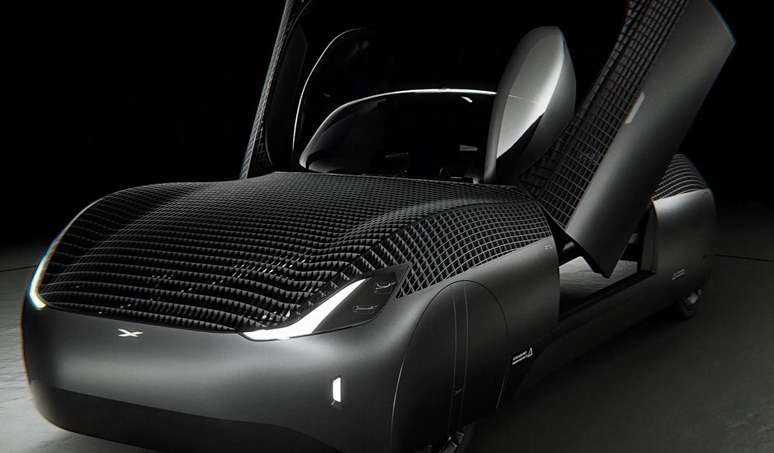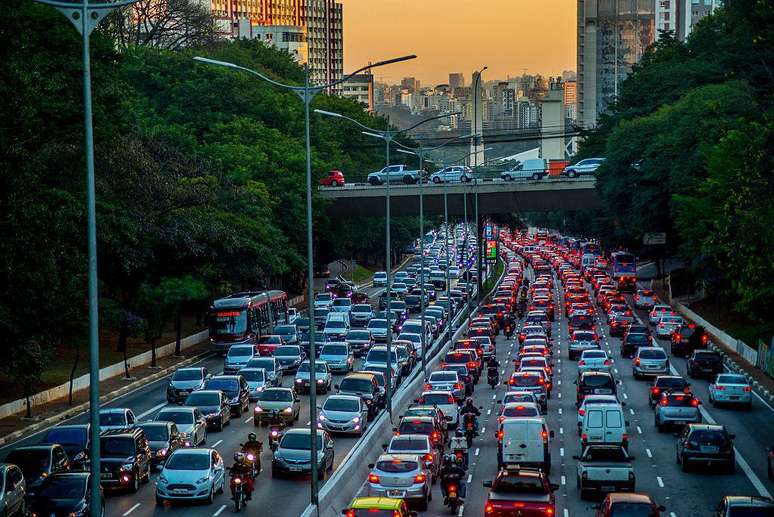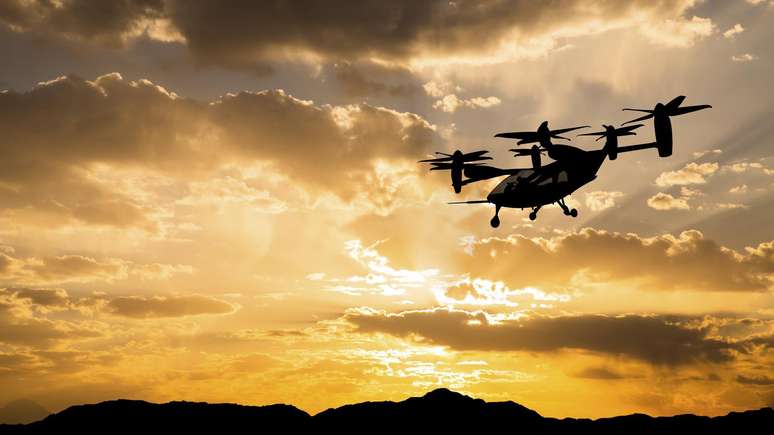Noise, regulations and costs are challenges for the sector, but pioneering projects are underway, including in Brazil.
A new era of aviation is about to begin.
On June 12, 2023, the United States Federal Aviation Agency (FAA) issued a Special Certificate of Airworthiness for a flying vehicle model developed by the Alef Aeronautics company. The certificate allows the aircraft to be flown in limited locations for exhibition, research and development purposes.
Advanced Air Mobility (AAM) is an umbrella term for cargo or passenger aircraft with a high level of automation. Often referred to as air taxis or vertical take-off and landing (VTOL) aircraft, these vehicles theoretically offer faster and safer door-to-door transportation.
In Brazil, Embraer announced this Thursday (20/7), the date in which the 150th anniversary of the birth of Santos Dumont is celebrated, that it will produce eVTOL in a plant in Taubaté (SP), to be expanded to meet new demand. The first models are expected to be delivered in 2026.
The advantage of these flying vehicles is that their speed is not restricted by the physical infrastructure of the region, nor by terrestrial congestion. And although the flying car is still a long way off, recognition of the Alef vehicle is a milestone in the history of air mobility.
There are still many challenges to solve before flying cars become a reality in cities around the world. Your constant noise during flight, takeoff and landing are just one of them.
The founders of Alef started working with this concept in 2015 and created the first full-size flying car prototype in 2019. Model A it is a car for two occupants, suitable for road traffic, with a range of 322 km on land and 177 km in the air.
Sleek and compact, the vehicle is designed to look like a regular car. It does not need a runway to take off and is also suitable for traditional parking lots.
And the Model A’s operational innovations are just as important as its shape. The company says the vehicle’s patented technology allows it to take off vertically and transform into a twin-engine mid-flight. Its doors are transformed into wings: an initiative to try to revolutionize our daily transport.
But so far, seeing the Model A fly has been the privilege of a few investors, in a demonstration in 2019, according to the company’s website. And a number of technological difficulties remain unresolved.
“Some of the components we need are simply not on the market yet,” explains Jim Dukhovny, chief executive officer of Alef Aeronautics. ‘For example, to avoid differential stress, we need highly specialized motor propulsion systems.’
Size, weight and price restrictions will determine when these vehicles are available to the public and whether they can be driven safely.
the pioneer
Alef, based in California (USA), plans to start manufacturing the flying machines in 2025 or early 2026.
But the vehicles are already available for pre-order. The current price is US$300,000 (roughly R$1.44 million), but the company expects the scaled-down cost to be US$35,000 (roughly R$168,000).
The Model A is considered an ultralight “low-speed vehicle,” a legal classification originally reserved for golf carts and small electric vehicles. And it comes with very strict guidelines issued by the US Highway Traffic Safety Agency.
“He’s a pioneer,” says Dukhovny. “When cars started to replace horses, many similar questions arose: about safety, what would happen to cities… many wanted to go back to horses. If everything is done right, the flying car should be safer.”
But the Model A is, after all, meant to be a car. And making a car sky-safe—that is, light and aerodynamic—can actually reduce its safety on the road.
“The hardest part is still the transition – we don’t know what happens when the vehicle is transferred from land to air,” explains Dukhovny.
Ideally, the transfer of ground-to-air authority would be automatic, but there are complex obstacles, both legal and security.
Urban air mobility operations will primarily be the responsibility of each country’s national aviation agency, such as the FAA, in the United States, and ANAC, in Brazil.
Aviation agencies have jurisdiction over all operations in the national airspace and are responsible for certifying new aircraft types, following safety reviews.
The role of cities in ensuring safety will be to implement the rules established by the agencies.

An interim report released by the FAA says flying car operations will initially use the same existing regulatory standards and frameworks (such as visual flight rules and instrument flight) as a platform for improved aircraft performance and greater levels of autonomy.
The report raises some concerns without fully addressing them. These are questions about noise, pollution, safety, sustainability and costs.
Who will drive the flying cars, for example? Will passengers need a permit? How will “vertiports” (the take-off and landing points for these types of vehicles) and high-flying cars affect neighborhood life? Which jurisdiction will be responsible for an in-flight accident?
The speed of these vehicles can cause collisions, both with buildings and between the cars themselves. Therefore, precise and scientifically guided route planning is essential.
The FAA envisions that “air taxis” could operate in specific corridors between airports and vertiports in urban areas. But so far there are no provisions on route and trajectory planning for flying machines.
Without noise
And then there’s the noise issue. It is difficult to design flying machines that are exceptionally quiet, especially if large-scale commercial operations involve hundreds of takeoffs and landings per hour.
Electric thrusters and others design elements of propulsion of flying machines can reduce noise pollution. Also, designers will certainly need to consider the decibel noise level of the vertiports or landing sites. But strict government regulations may be required to control noise levels.
To this end, the rules on aviation infrastructures envisaged by current legislation, which apply to traditional airports and heliports, can be adopted.
In an effort to help manufacturers design quieter vehicles, NASA (the US space agency) has collaborated with the FAA, university researchers and other industry leaders to develop software tools that can model and predict AAM noise.
NASA’s Advanced Air Mobility campaign will study human reaction to low-frequency noise, the limitation of so-called “broadband noise” (sounds that humans cannot link to specific sources), and how to predict what sound will be produced by this large number of vehicles flying simultaneously.

British firm Arup offers design, engineering and sustainability services for urban environments. He recently held a panel discussion to discuss the possibilities and disadvantages of the air mobility market.
“The way cities have the greatest opportunity to enforce control is through operating permits,” according to Arup director responsible for San Francisco, Byron Thurber.
“As with airlines and airports, municipalities have the authority to regulate the operation of commercial air mobility services,” he continues. “This could include rules about opening hours limits, maximum vertiport density in certain neighborhoods, and rates.”
In other words, cities can limit when and where air taxi services can operate.
Will this be the end of traffic jams?
Perhaps unsurprisingly, Los Angeles (USA), with its massive congestion, is often cited as an early adopter of air mobility. But how can flying cars help unblock a congested city like Los Angeles?
“One thing to keep in mind is that urban air travel isn’t going to eliminate congestion,” Thurber says. “In fact, we probably won’t see as many vehicles in the sky as there are cars on the ground. And if we did, we’d have congestion in the sky.”
A more likely scenario is the use of air taxis in densely populated areas such as central London or New York during peak hours.
Initially, the only ones able to fly may be the very wealthy passengers, as was the case in the early days of commercial aviation. But over time, economies of scale can make flying cars affordable, especially if cities can incentivize companies to provide access and services to low-income neighborhoods.
In 2021, the Los Angeles Department of Transportation (Ladot) commissioned Arup to produce a report with structural observations on urban air travel policy, with specific emphasis on use isonomy. The report stresses that flying cars should be considered a subsidized municipal service and a public good.
Once the proof of concept is established, rigorous testing performed and safety risks reduced, advanced air mobility services should function similarly to libraries, schools, airports and highways – not as a technology of concern, but as a resource accessible to the whole community.
read the original version of this report (in English) on the website Future of the BBC.
Source: Terra
Rose James is a Gossipify movie and series reviewer known for her in-depth analysis and unique perspective on the latest releases. With a background in film studies, she provides engaging and informative reviews, and keeps readers up to date with industry trends and emerging talents.




![Un Si Grand Soleil Preview: Episode Summary for Tuesday, October 21, 2025 [SPOILERS] Un Si Grand Soleil Preview: Episode Summary for Tuesday, October 21, 2025 [SPOILERS]](https://fr.web.img4.acsta.net/img/c7/7f/c77f5c02e3632e8e611d5041c2b9f36e.jpg)

